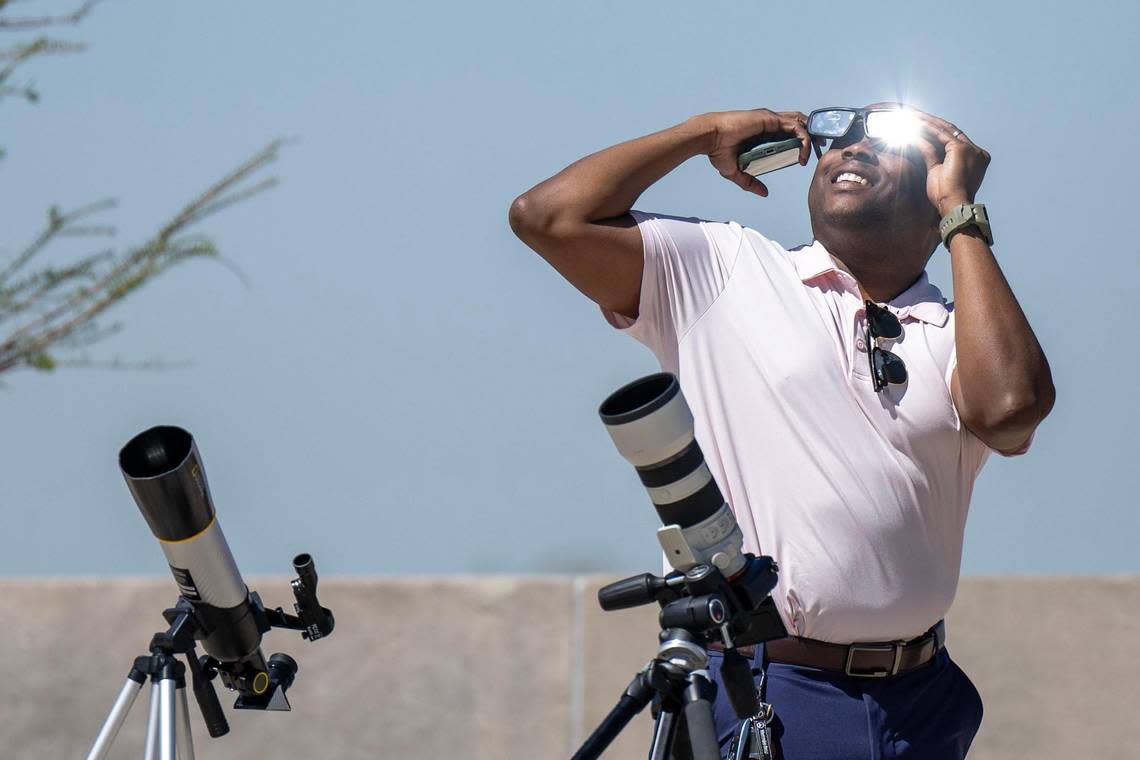Here’s how long you’ll have to wait to see the next solar eclipse in Kansas City.

You will have to wait quite some time before the next solar eclipse hits the contiguous United States.
A partial solar eclipse passed through the Kansas City area on Monday, with the sun being 89% obscured by the moon at its peak .
It marked the first solar eclipse to reach Kansas City since 2017, when the path of totality went straight through the city, covering the sky that day.
Thousands of residents watched outside as the cloudless sky turned gray and the temperature dropped. For many Kansas Citians, it’s the last eclipse they’ll see for the next 20 years.
The next time an eclipse hits the 48 adjoining U.S. states is in 2044, when it will span Montana and the Dakotas. Nine years from now, on March 30, 2033, one U.S. state, Alaska, will see the eclipse. Alaska’s West Coast will share the path of totality with Russia’s East Coast.
Before then, solar eclipses will happen in these parts of the world:
Aug. 12, 2026: Greenland, Iceland and Spain.
Aug. 2, 2027: Algeria, Egypt, Libya, Morocco, Saudi Arabia, Spain, Somalia and Yemen.
July 22, 2028: Australia and New Zealand.
Nov. 25, 2030: Australia, Botswana and South Africa.
When will a solar eclipse pass through Kansas City?
If you are holding on to those eclipse glasses for the next total solar eclipse in Kansas City, you might want to donate them. It won’t be visible in the area before the year 2200, according to the astronomy and time zone website Time and Date.
An annular solar eclipse, which happens when the moon passes between the sun and Earth, at or near its farthest point from Earth, will go through the city on April 12, 2154, according to the website and NASA.
However, the next total solar eclipse to pass through Kansas will be on August 12, 2045, the website said. NASA mapping shows it will pass through the southern part of the state, including Dodge City and Garden City, which are five-hour drives west of Kansas City.
A total lunar eclipse will be visible in Kansas City at night on March 13, 2025, and going into the early morning on March 14, according to Time and Date. This is when the entire Moon passes into the Earth’s umbral shadow, the National Weather Service said.


